Rongshui Miao Batiks: World of Blue and White
Publication time:2022-07-20 15:04:40
By Chen Zhiying
In the mountainous north of Guangxi Zhuang Autonomous Region inhabits a small group of Miao minorities. Life in the mountains is hard,but people in Rongshui Miao Autonomous County fill their days with dance and music. As they dance, the gods in white color also dance with them against the indigo. Vivid patterns like these created by wax paintings are virtual languages for Miao people in Rongshui to reflect their lives, tell stories, covey feelings, and express the group’s aesthetics. For thousands of years, this natural and dynamic beauty has appeared on women’s clothing, headwear, aprons, and skirts, and earned itself as an equal place as the silver decorations.
Forming of the oriental art
Batik boasts a history of nearly 2,000 years. According to historical records, as early as the Han Dynasty (202 BC-220 AD), batik was one of the goods traded along the Silk Road. During the Tang Dynasty (618-907 AD), the technique of making batik became mature and was popular and widespread across the country.Today, we can still see the scenes of making batiks in the murals of Mogao Grottoes in Dunhuang, Gansu Province. About the origin of the technique, there is a legend going like this: A young Miao girl doesn’t like the single-colored cloth she wears everyday, so she ponders ways to dye beautiful patterns on it. One day, she gradually falls asleep and has a dream as she lies in a bed, thinking. In the dream, a fairy takes her to a big garden. Attracted by the exotic flowers and butterflies, she didn’t notice the bees landing on her clothes. When she wakes up, she finds some honey and beeswax on her skirts. Wanting to remove the spots, she dyes the skirts with indigo. After several times of dyeing, the stains are covered by the deep blue color but the cloth needs to be soaked in hot water to get rid of the beeswax. To her surprise, after the final wash, the beautiful flower patterns she saw in her dream appear following the wax stains. From then on, people know the technique to create patterns on the cloth and pass it down from generation to generation.
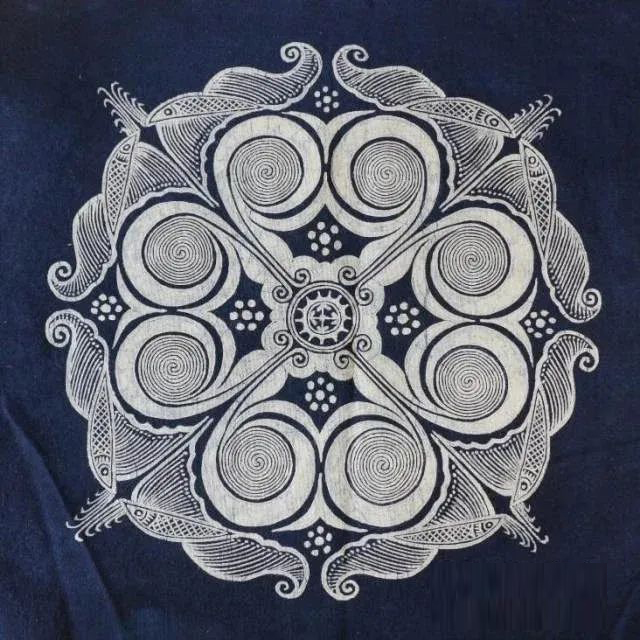
A gift from nature
Inhabiting in Rongshui County where the geographical landscape features larger mountain massifs, the Miao people are relatively isolated and less influenced by the outside world. Therefore, batiks they make have an original favor. Besides the environment, what add to this primitive sense is that the materials they use are mostly obtained from nature. For example, fabrics of the batiks are spun by the locals themselves using white cotton they plant. Unlike those woven by machines, self-made textiles are thicker and more durable, making them suitable for printing and dyeing. The dye used in the batik is extracted from a local plant called indigo grass. The plant can grow in any untilled land and is abundant in the mountainous area of Rongshui County. When it matures, the leaves are picked and fermented to make indigo dye. The color looks sedate and sober, giving a peaceful feeling to the wearer. In addition, it’s said that the plant has medical effect and the cloth dyed with this plant can help heal wounds and repel insects.
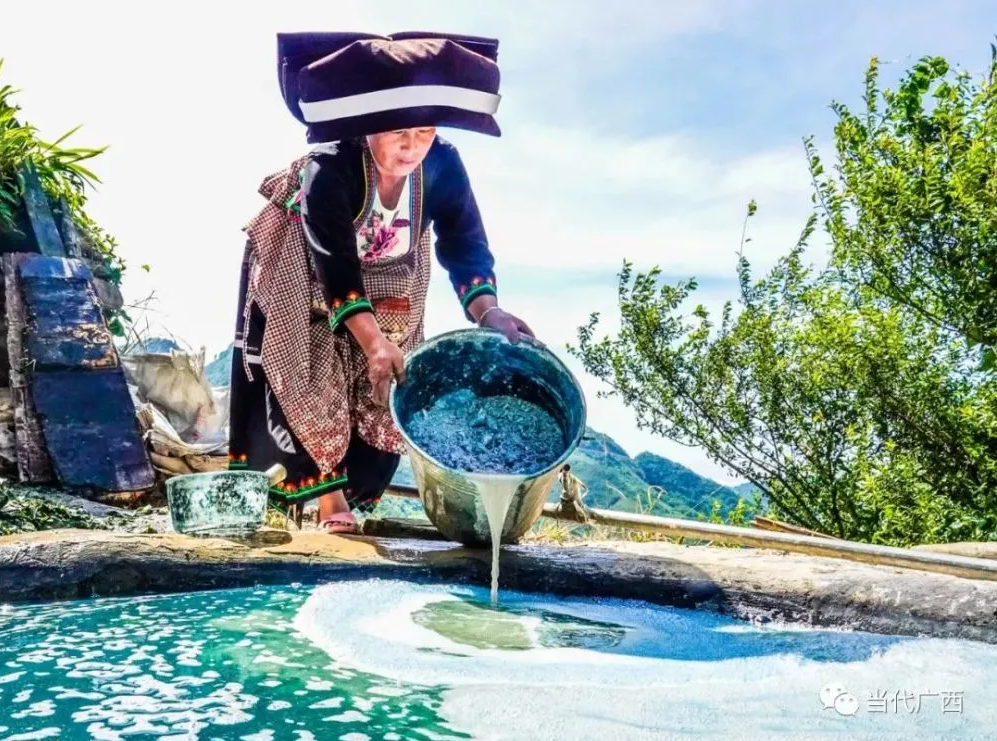
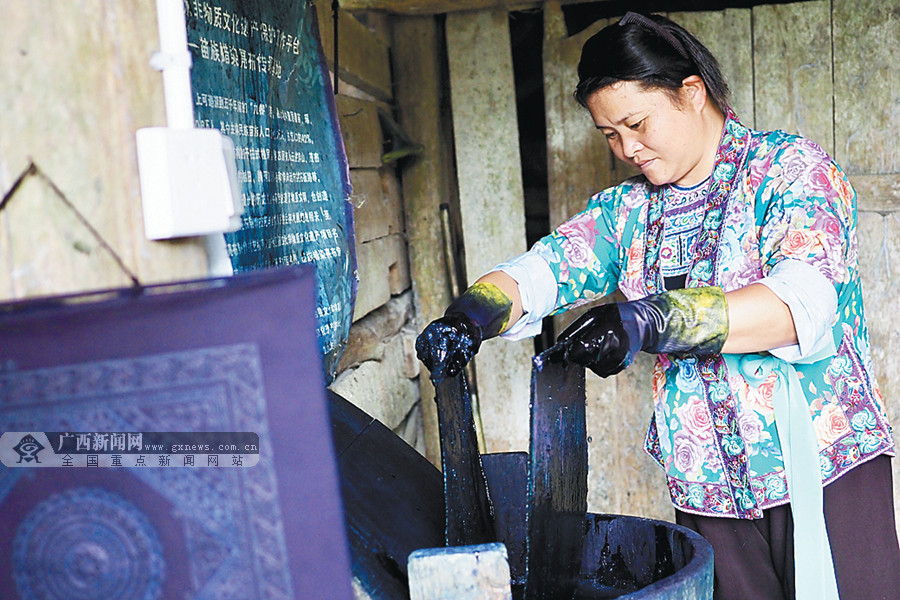
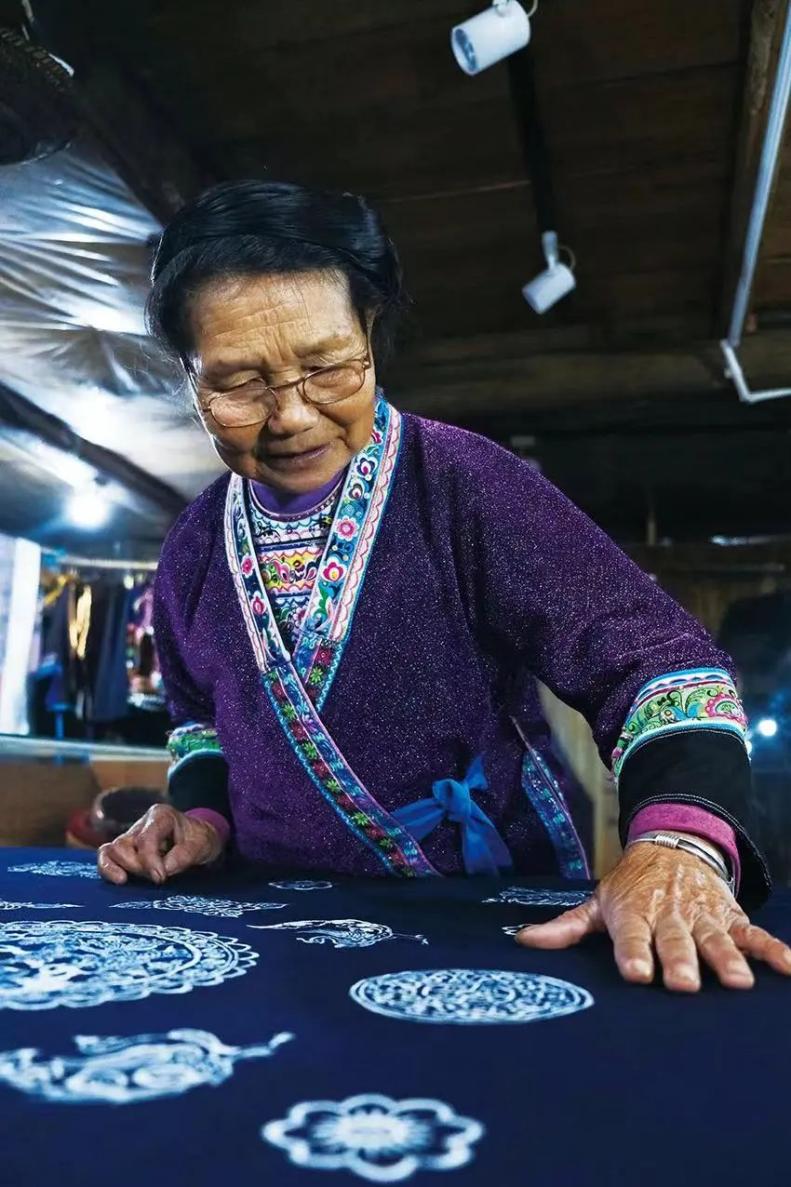
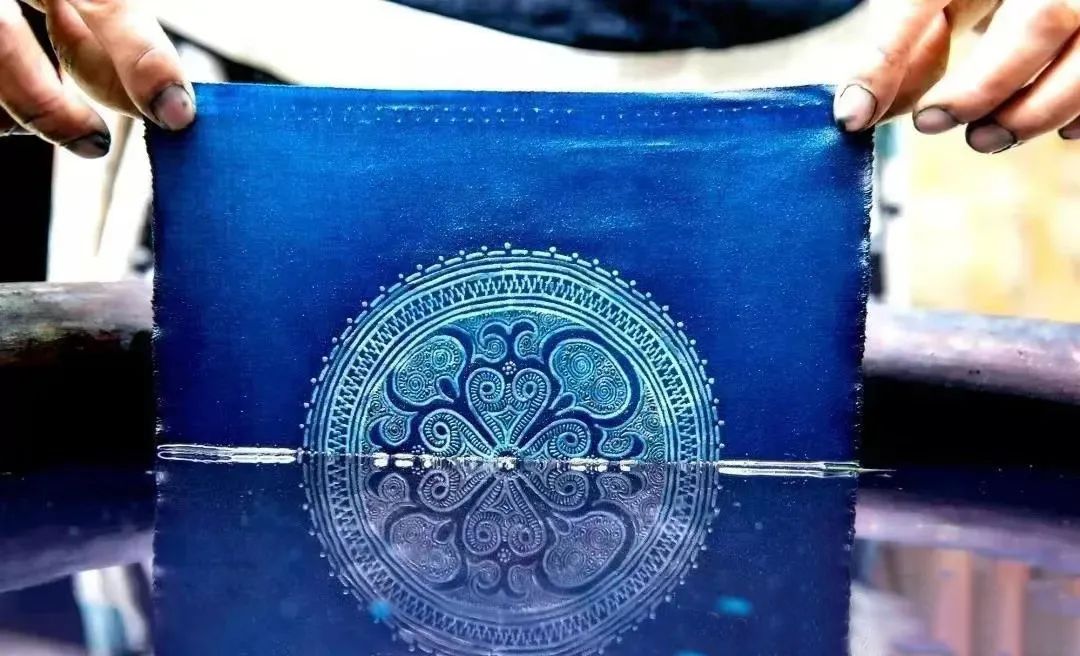
Tips:
Indigo dye is processed in cold water, whereas the plant dyes of other colors are processed in hot water, which will melt the wax before the cloth is dyed. That’s why there are only wax paintings against the indigo blue background in ancient times.
Simple tools to produce ineffable beauty
Batik is Miao women’s art. They use hand-made copper knifes to create complex and fascinating patterns on the white cloth. The process for making batiks is simple compared with other forms of art but requires one’s patience and meticulousness. The frst step is to melt the wax and apply it with a copper knife to the cloth to outline the figures. Next, the cloth with dried wax is put into a dye vat several times to make sure the cloth can absorb indigo as much as possible. After that, the wax can be removed with hot water. The final step is to rinse it in clean water and dry it in the air. A unique“ice cracks”pattern will appear during the dyeing process. This is because the dried wax develops cracks and soak up the plant dye, thus forming natural lines resembling breaking ice. These special marks left on the cloth are loved by people because they are nature’s unique crafts.
In a well-balanced composition, the fnished batik creates a world of blue and white: the patterns are vividly drawn with soft lines, while the indigo accompanies the white, producing a sense of harmony and antiqueness. Besides the external beauty that the batik brings to our eyes, it also has rich connotations that inspire us to move forward. Even though Miao has experienced countless difficulties, the patterns on the batik are still full of hopes and gratitude.
In 2014, Rongshui Miao batik was listed into the fifth batch of the intangible cultural heritages of Guangxi Zhuang Autonomous Region. More measures are taken to preserve this visual language of Miao ethnic group.
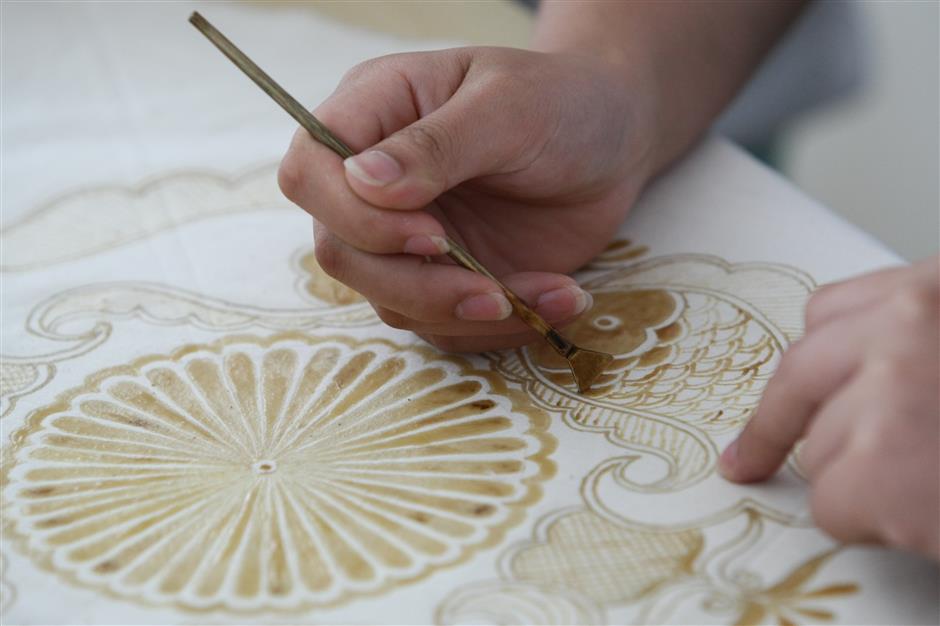
Tips:
- The cooper knife for wax paintings has different shapes and sizes to create different patterns.
- Wax used in batik has very rich selection. The wax that people in Rongshui used is mixed by maple pulp and sheep’s oil in the proportion of 2:1.

